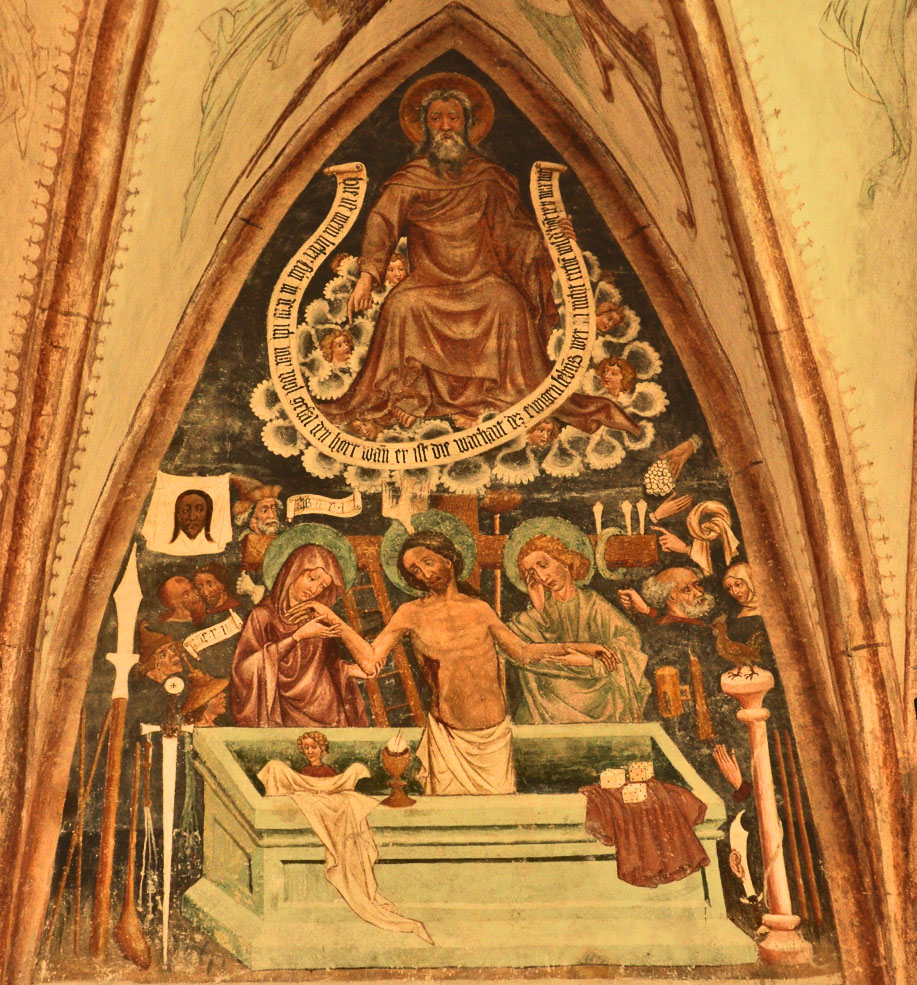
The Man of Sorrows
15th century
Fresco
Parish church, Mariapfarr, Austria
In "Man of Sorrows" images such as this one Mary and John hold up the body of Jesus, who stands in his sarcophagus, his wounds still visible for pious contemplation. This example also adds a host of details drawn from the Passion narratives. Counter-clockwise from above Mary's head:
The "King of the Jews" scroll that had been placed on the cross; an old man (the chief priest?); Veronica's veil; Judas kissing Jesus; two men to represent the mob that taunted Jesus; various instruments of torture and death; the front of the sarcophagus with Jesus' winding sheet, a chalice capturing the blood from Jesus' side, and a short tunic with the dice that the soldiers cast for it; the sword Peter used to cut off the ear of the high priest's servant; the column where Jesus was scourged, topped by the rooster that Peter heard crowing, with a set of praying hands to the left; a flagon and a stick; Peter with the serving woman who accused him; a hand holding the pliers used to remove the nails; a white cloth tied in a knot; three more hands, one dispensing little white things; on the crossbar the crown of thorns and the nails that affixed Jesus to the cross; the pole with the vinegar sponge; and the ladder used in taking the body off the cross.
In the upper register, the Father points to Jesus and holds a scroll with a message in Bavarian. It begins with a quotation from Matthew 17:5, Hir is mein lieber sún in dem ich war wol gefallen, "Here is my beloved son in whom I am well pleased." It then continues with an amplification of the next two words in Matthew: den horr wann er ihr die warhait des ewigen lebens [sagt?] wer ihn nicht erhore will das…, "Hear him when he (tells) you the truth of eternal life. Whoever does not hear him will…" (I cannot make out the last bit.)
View this image in full resolution.
Read more about The Man of Sorrows.
Photographed at the church by Richard Stracke, shared under Attribution-NonCommercial-ShareAlike license.